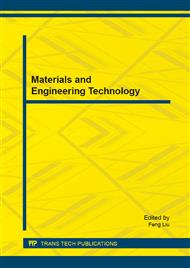p.21
p.25
p.29
p.38
p.46
p.50
p.55
p.59
p.63
Experimental Analysis of Different Coolants Used in Plasma Cutting Operation for the Improved Electrode Life
Abstract:
The plasma cutting technology has been emerged as a developing technology which finds tremendous potential in fabrication and metal cutting industries. Thus for the cutting operation, the electrode inside the plasma torch plays a vital role for the plasma arc generation. The temperature of the arc is very high and at the electrode is around 3500°C. The cutting torch requires proper cooling system in order to prevent the electrode from quick wear due to the existence of high thermal gradient. The presented work aimed to study the impact of three coolants propylene glycol, ethylene glycol and de-ionized water flow over the electrode life. The experimental setups were arranged to study the heat transfer capabilities of the three coolants for different flow values and aimed to achieve the optimal flow rates for the efficient heat removal. The electrode life test trials were conducted to measure the electrode life for the flow values of three coolants in the temperature rise test. The optimal flow rates arrived from temperature rise test and the electrode life measured from life test are compared for the three coolant cases considered.
Info:
Periodical:
Pages:
46-49
Citation:
Online since:
January 2015
Authors:
Price:
Сopyright:
© 2015 Trans Tech Publications Ltd. All Rights Reserved
Share:
Citation:


